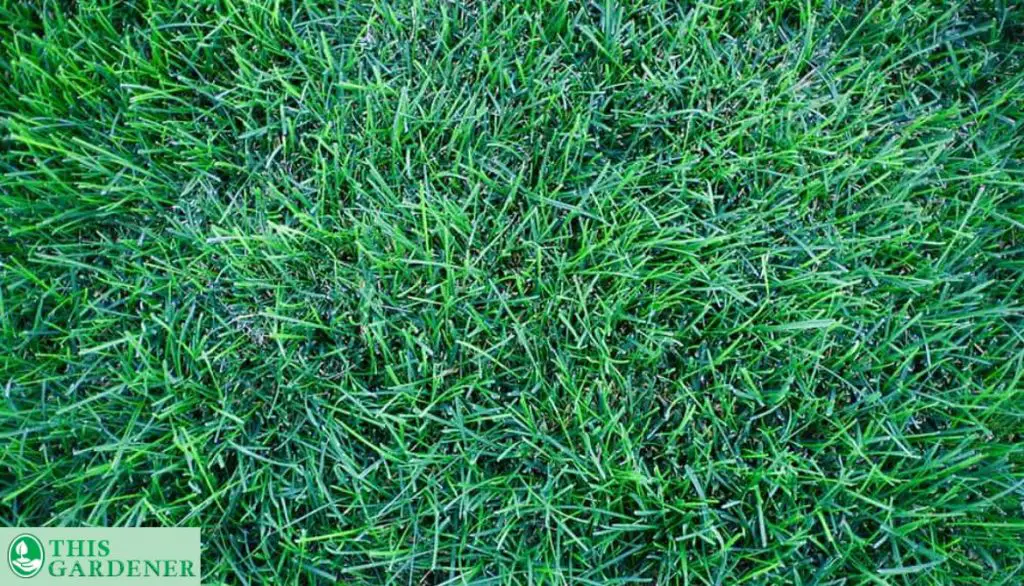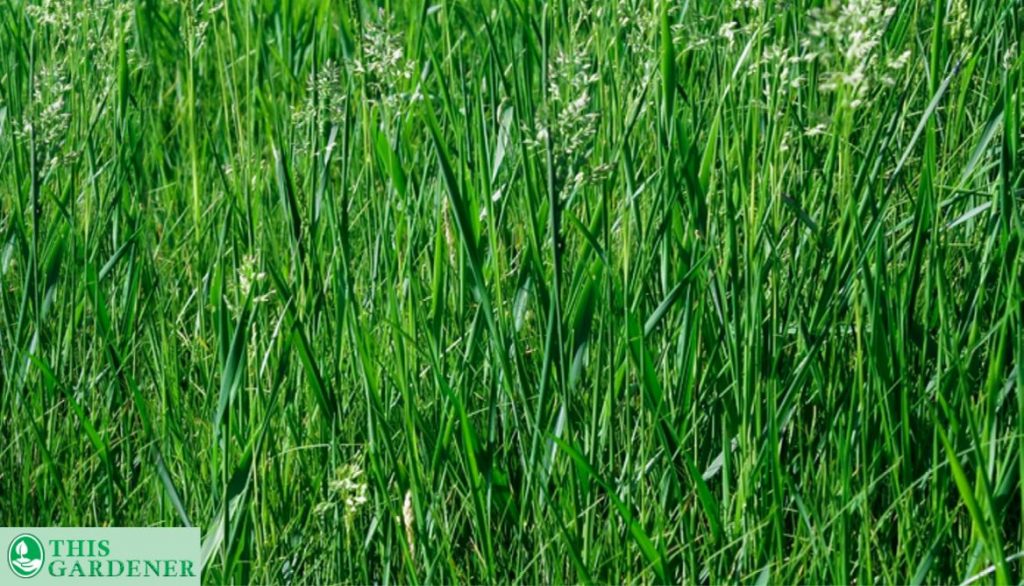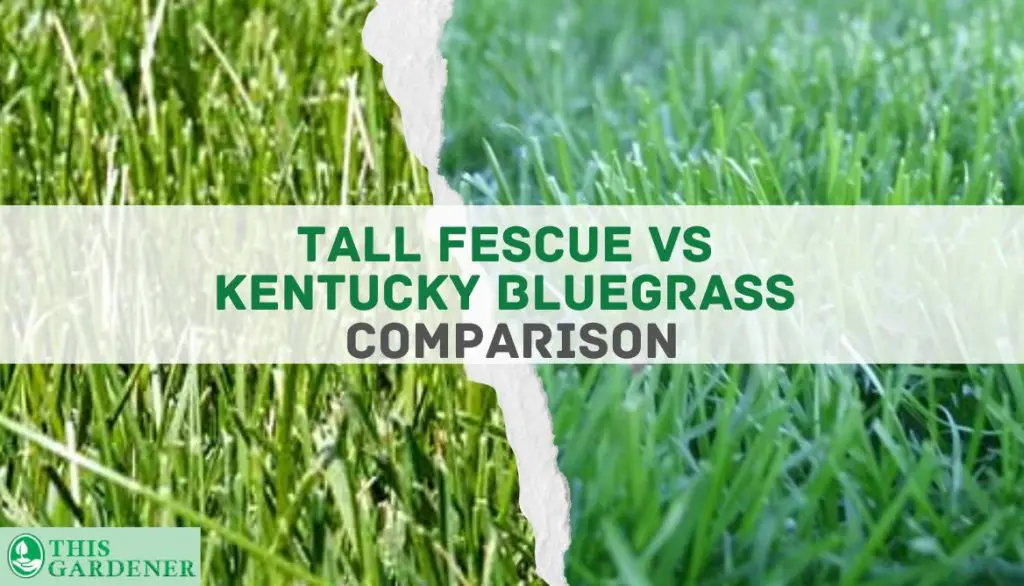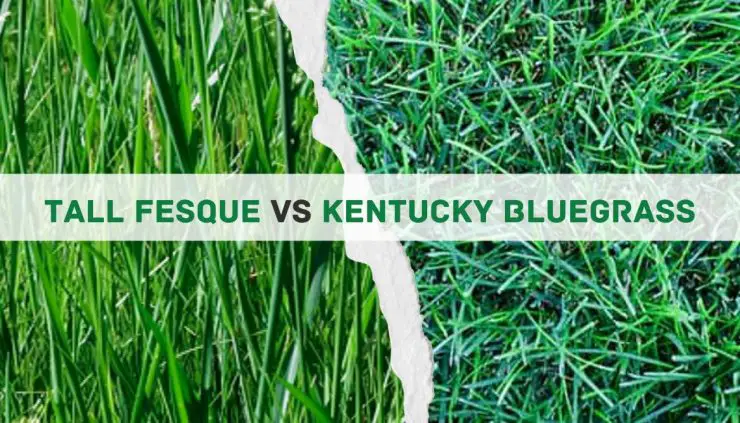Selecting a grass type for your turf has never been an easy task! You have a lot of options but Kentucky bluegrass vs Tall Fescue is the most usual debate. Both of these are similar but with a few differences. Tall Fescue offers longer durability while Kentucky bluegrass is more elegant and is good for cultivation.
It is excellent at holding up the lawn surface. Kentucky bluegrass excels in taking out the weed. Tall Fescue is used on baseball fields due to its higher durability while Kentucky bluegrass is used on golf courses due to its clean look and self-repairability. Let’s dig a bit deep into both these types and determine the best one for your use.
Contents
Kentucky Bluegrass vs Tall Fescue Comparison
If you have been thinking of a hassle-free, less-maintenance, and inexpensive grass option then you have sought out the right type of grass for your lawn.
While most grass seed types would wilt or die out due to harsh weather conditions, Tall fescue won’t! Being resilient grass species, it has some really impressive natural traits.
Tall Fescue | Kentucky Bluegrass |
Deep Root System | Horizontally Spread Roots |
Fast Germination | Slow Germination |
Excellent Durability | Good Durability |
Coarse Texture | Velvety Texture |
Not Suitable for Hot Weather | Great in Extreme Weather |
Comparative Analysis of Tall Fescue Grass vs Kentucky Bluegrass:
Tall Fescue | Kentucky Bluegrass |
Is mostly used in tracks and basketball fields | Kentucky Bluegrass is thin with a finer texture |
It has high durability against contamination | Highly durable against contaminations |
It doesn’t cope well with a lot of sunlight | Needs lots of sunlight |
Best to keep it away from direct of natural light | Works in a bit of shade as well |
What is Kentucky Bluegrass?

Kentucky bluegrass is a type of turfgrass. There are rhizomes present and the roots are also quite thick. It is also good against impacts and traffic and easily repairs itself. There are a lot of benefits as well as drawbacks to using Kentucky bluegrass.
Features:
- Thin Blades
- Dark Green Color
- Thick Sod
- Lead Shaped like a boat
- Needs Direct Sunlight
What is Tall Fescue?

It is a turf grass that spreads through tillers and grows in the form of clumps. It is not that heat tolerant so doesn’t require a lot of sunlight. It has good durability due to a deep root system. Some of the highlighting features are:
Features:
- Thin Blades
- Rough Texture
- Resistant to Disease
- Cool Season Grass
- High Heat Tolerance
Comparison Between Tall Fescue vs Kentucky Bluegrass:

Both of these are really good grass types that are perfect for a lawn. But there are areas in which each one is better and worse than the other. The answer to which one is the best falls down to the following things:
Looks:
Due to the thinner blades and finer texture, you get a more elegant look with the Bluegrass. Tall Fescue grass also has thin blades but with a rougher texture. Both of these grasses provide strong durability and each comes with its own look and style.
Tall Fescue Identification:
Identifying between the two grass types is also quite easy. Both of them have dark green blades but yet are very different from one another. Tall fescue identification is also easier due to rougher blades. Fescue is best for long-term durability.
Kentucky Bluegrass Identification:
Kentucky bluegrass identification is easier due to its finer blades that have a classy elegant look. If you want the softest lawn then bluegrass is the obvious choice.
Growth & Sod Formation:
Kentucky bluegrass has a dense sod and a thick root system that provides excellent durability. It grows by spreading through the rhizomes. Tall Fescue also has a complex and deep root system and acts as strong turf grass. Both of these are highly resistant to contaminations.
Best Uses:
If you want the turfgrass to hold for a long time, then prefer Tall Fescue. It helps in holding up against high traffic. Low nutrient levels, high contamination, and soil compaction are handled flawlessly by Fescue. That is why you will mostly see it near animal pastures, baseball fields, etc.
Bluegrass is really good in high-traffic areas as well. Kentucky bluegrass rhizomes allow for a thick root network. You also get really good self-repairability with bluegrass. This glass also fills the patches in the ground. Due to such features, this type of grass is widely used in golf courses.
pH and Soil Types:
The optimal pH level for Tall Fescue is about 5.5-7.5. The best area of growth for Tall Fescue is clay soil rich in nutrients. It helps in retaining moisture. Kentucky bluegrass requires damp soil rich in nutrients. The optimum pH for bluegrass is about 6-7. It does perform better in alkaline soil and is not that good in acidic soil.
How Much Water Do You Need?
Fescue grass only requires about 1″ of water/week and it can easily survive for a long time without water as it is drought tolerant. But for the Kentucky bluegrass, you need to water it for 1.25″-1.5″ per week.
Fertilizer Requirement for Plantation:
If you choose tall fescue then you won’t need a lot of fertilizer. 1.5 pounds of nitrogen fertilizer per 1000 sq ft is enough for tall fescue whereas Kentucky bluegrass requires anywhere from 3-5 pounds of nitrogen fertilizer.
Temperature Requirements:
Kentucky likes direct contact with the sun and thus grows best at a temperature of 60-70 °F.
Whereas direct contact with sunlight isn’t a mandatory requirement for Tall fescue. It can stay in the shade as well. This is because of high-temperature damages its grass. The optimal temperature for tall fescue is about 65 °F
Durability:
When it comes to durability, nothing beats Tall Fescue. It is highly durable and works really well in muddy areas and is resistant to all types of lawn diseases. Bluegrass holds up really well in the durability department. It is good in muddy areas and can resist lawn diseases.
Pest & Diseases
Both grass types are resistant to pests and some known diseases. They also possess better recovery rates but it is Tall Fescue that does recover a bit more quickly.
Tall Fescue vs Kentucky Bluegrass Lawn – The Mowing Needs:
You should mow the Tall Fescue to about 2″/week in the winter season while cutting it to about 3″ in the summer. You can mow down the Kentucky bluegrass to 1″ and leave it to grow about 3″. But it is also faster growing, so you also need frequent mowing. Through frequent mowing, you can easily maintain a lush green lawn.
Maintenance Cost:
Tall Fescue is easier to maintain and there is no need for extra fertilizer. Kentucky bluegrass is a bit hard to maintain and requires more fertilizers. Thus, the maintenance cost of Tall Fescue is low while Kentucky blue grass is high.
Which Option is the Suitable For You?
It might be a very challenging decision to crown the winner from among Kentucky bluegrass and tall fescue but ultimately you need to come to a conclusion. Some salient features might aid you in narrowing down your decision. Let’s dig down deep and see which grass type triumphs:
Decision-Based on Climate – Cool season grasses
The most optimum temperature for a Tall Fescue is around 60-65 °F. It grows best in cooler areas. Similarly, Kentucky bluegrass is labeled as a cool season grass that grows the best in temperature ranges of 50-60 °F. The northern regions have higher votes for the growth of both Kentucky bluegrass & tall fescue.
Growth:
Both of these are known as cool-season grass species. Blue grass can bear more heat and grows in zones 1-2 and up to 8. Tall-Fescue grass also prefers a cooler season. Tall fescue grows in zone 1-3,5,6,7,8 to 12. Even though both of these are cool season grass, they still had various tolerances.
Bottom Line:
Kentucky is good for the northern areas while the turf type tall fescue likes cooler areas. You will see these cool season grasses in the coastal areas. These grass species are commonly found there.
Hassle-Free Maintenance Cost:
If we discuss maintenance costs, a tall fescue lawn requires less maintenance as compared to other grass. You need to have your mowing set up and also apply the nitrogen fertilizer. These cool-season grasses don’t require a very high maintenance schedule and will provide you with a healthy lawn.
Bottom Line:
Tall Fescue is maintained easily while the same cannot be said for Kentucky bluegrass. Both of them are really durable and will survive for a long time with a bit of care.
Decision-Based on Susceptibility to Pests and Disease
Most of the cool season grasses are prone to catching the same diseases. Insect infestation is a major problem with the Kentucky bluegrass lawns. Beetles are a major problem in these lawns that are the reason for serious damage over time. Brown patch infestation is the most common problem associated with turf-type tall fescue. This occurs during the summer season and this infestation completely ruins the grass.
Bottom Line:
Kentucky bluegrass is an overall durable grass with the only problem being insect infestation. Tall fescue grass is also really strong and suffers from Brown patch infestation. You can easily remove the infestation by using fungicide.
Both Kentucky Bluegrass & Tall Fescue are Similar – Here’s How?
Even though there are differences between Tall Fescue grass and Bluegrass, they also have some similarities as well.
Germination Time:
Turf Type Tall Fescue has a germination period of about 1-3 weeks. Bluegrass takes a bit longer and its germination period is from 2 to 4 weeks. Even though there is a difference but it is not that significant.
Duration of Seeds:
If you have stored them under good conditions, both of these grasses will only take about 3-5 years to germinate.
Hot Weather:
Even though bluegrass is more resistant to hot weather than turf-type tall fescue but both of them can get damaged by it.
FAQs
Can I mix Kentucky Bluegrass With Tall Fescue?
Yes, you can mix Kentucky Bluegrass with Tall Fescue. You can add bluegrass seed to Tall fescue grass in 1 or 2 pounds per 1000 sq ft.
Is Kentucky blue or tall fescue better?
One can’t be deemed better than the other as both of them have their fair share of benefits as well as drawbacks.
Why is Kentucky bluegrass so popular?
The reason behind its popularity is its ability to spread through the soil. Furthermore, it can also self-repair and remains good in hot weather too.
Will Kentucky bluegrass choke out weeds?
Yes, after it is germinated, it can choke out weeds from that area.
Will Kentucky bluegrass choke out weeds?
Yes, after it is germinated, it can choke out weeds from that area.
Does Kentucky bluegrass stay green all year long?
It gets a bit dull in the winter season if you don’t care for it properly. If it is getting the sunlight and nutrients then it will stay green.
Will Kentucky bluegrass Fescue?
No, both of them do have the same dark green blades but are quite different from each other.
What should I Overseed Kentucky bluegrass with?
If you mix bluegrass with Tall fescue grass then you will get the benefits of both. This drastically reduces the maintenance of your lawn.
Does Kentucky bluegrass have runners?
Yes, the runners in the bluegrass are called rhizomes. Their growth is horizontal beneath the ground.
Is tall fescue good for high-traffic areas?
Yes, due to the coarse blades, deep roots, and the overall sturdy nature of tall fescue grass, it is best suitable for high-traffic areas.
Will Kentucky bluegrass fill in bare spots?
Yes, bluegrass fills in the bare spots in a natural way. Any damage caused to the grass will get repaired automatically.
Conclusion
Kentucky Bluegrass vs Tall Fescue is a difficult choice to make. Bluegrass is best for hot weather whereas the fescue might falter a bit. But you get more durability and less maintenance with the Tall Fescue. You can also mix tall fescue with bluegrass. So, in the end, it is up to you to decide on the best lawn grass. Also, tell us what type of grass you currently use and if are you satisfied. See you in the comments.
References:
Turf Comparison: Tall Fescue vs Kentucky Bluegrass (lawnmowerguru.com)
Tall Fescue vs Kentucky Bluegrass – AGreenHand
What is Kentucky bluegrass? – Water Conservation for Lawn and Landscape (extension.org)
All You Need to Know About Tall Fescue (pennington.com)
Kentucky Bluegrass vs. Turf-Type Tall Fescue. Experigreen Lawn Care
- How to Get Potatoes to Sprout Eyes: Detailed Growing Guide with 3 Options - July 31, 2023
- Weight of a Medium Potato: Revealed in Detailed Guide - July 29, 2023
- Maris Piper Potatoes: 9 Substitutes You Should Know About - July 27, 2023
Hello! I’m Jessica Zander, a garden coach and consultant based in the Boston area (zone 6b), offering virtual consultations across the country and Canada.
I’ve been passionate about gardening since the early 1990s, and in 2022, I launched You Can Do It Gardening to empower individuals to feel more confident in their gardening endeavors.
Following a 30-year career in nonprofit finance and operations, I transitioned out of that field in mid-June of 2023 due to the growing demand for coaching services. Interestingly, my years of presenting financial statements to boards and finance committees proved to be valuable experience for teaching people about gardening! I enjoy sharing skills, providing guidance and suggestions, and collaborating efficiently with clients to make significant improvements to their outdoor spaces, both small and large. I also regularly teach at the Arlington Continuing Education and Cambridge Adult Education.
My approach is direct and practical, akin to Mary Poppins, but tailored to your garden. Clients find satisfaction in saving money and taking pride in their own gardening achievements.


Add comment